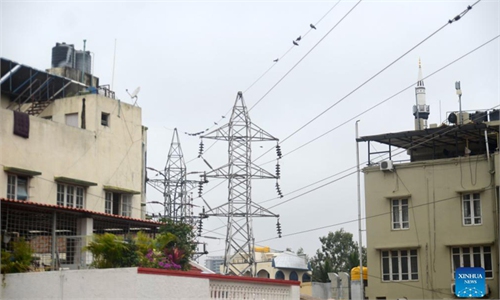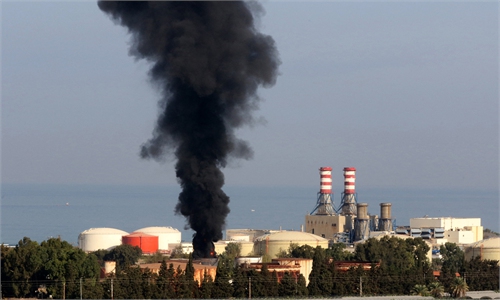As power shortages in China ease, India is still grappling with supply bottlenecks
India still faces challenges to increase coal supply as prices surge

A coal mine in Ejin Horo Banner, North China's Inner Mongolia Autonomous Region on October 20, 2021 Photo: VCG
While China has taken measures to resolve its power shortage, with the effects gradually emerging, its neighbor, India, which faces the same problem, remains in trouble.
Amid the latest efforts, China's top economic planner inspected and coordinated with centrally administered state-owned enterprises to increase coal production and supply, said the National Development and Reform Commission (NDRC) on Monday.
Market information on Monday showed that coal mines in major producing provinces in China have taken the initiative to reduce the sales price of coal, which fell by more than 100 yuan ($15.65) per ton and at least in one case, by 360 yuan per ton.
Of India's 136 coal-fired power plants, 10 have run out of coal storage and 117 plants have coal inventory for less than a week, meaning that nearly 86 percent of the country's coal plants could close at any time for lack of coal. What's more, not even one plant has a coal stock enough for one-month use, according to the latest statistics from India's Central Electricity Authority (CEA) on Saturday.
Indian government has asked power plants to increase their coal storage, while China has taken steps to lower prices, increase domestic production, expand imports and accelerate new-energy generation.
"Compared with India, it is a different story in China, where the lack of coal is due to the closure of many mines to meet the clean energy target, rather than a lack of capacity, which is now being rushed back into production," Wang Yongzhong, head of the Institute of World Economics and Politics under the Chinese Academy of Social Sciences, told the Global Times on Monday.
Since the end of September, China's average daily coal output has increased by more than 1.2 million tons, said the NDRC on Monday.
Coal supply surpassed consumption for 20 consecutive days from October 5. By Sunday, the coal inventory in power plants reached 95.69 million tons, which can be used for 17 days. With the further release of coal capacity, power plant coal supply will be further improved.
India's system gives local governments more power than the central government, so it's more difficult for the national authorities to mobilize public resources on a large scale.
Therefore, India cannot make a national-level call like China to lower coal prices and stabilize supply, Qian Feng, director of the research department at the National Strategy Institute at Tsinghua University, told the Global Times on Monday.
"India's underdeveloped energy system and rapid economic growth have magnified and will worsen the problem of power shortages. India is one of the fastest-growing economies in the developing world, which means high demand for electricity," Qian noted.
India's total generation capacity was about 448.11 million kilowatts at the end of March, 2020, per the CEA.
"The electricity system in India is poorly managed and its energy structure is more dependent on thermal power than China's, while other energy sources such as hydropower and wind power are underdeveloped," Qian said.
Coal is the major source of energy in India, accounting for about 73 percent of total energy consumption, according to India's National Statistical Office.
In China, which is on its way to achieve carbon neutrality by 2060, the proportion of installed coal-fired power capacity - at about 1.095 billion kilowatts in 2020 - fell to 50 percent of the total for the first time. The proportion of coal-fired power was 65.7 percent in 2012, according to data released by the National Energy Administration in January.
Apart from using more clean energy sources, analysts said that expanding imports is one solution for both China and India. But global coal prices have surged, and it's more difficult for Indian power plants to afford the higher prices than for Chinese ones.
For instance, benchmark coal prices in Indonesia have reached record levels, rising from $110-120 a ton in early October to hit $160-170 this week.
Indonesia exported 21 million tons of coal to China in September, up from 17 million tons in August, according to China's General Administration of Customs.
The coal shortage in China is expected to ease in a few months as all the measures are implemented. But China will continue to import coal as it gradually shifts from fossil fuel to clean power, Wang said.
Analysts said that India faces a dilemma: Its industrialization is not complete, while it has not made a clear commitment to the international community to reduce gas emissions.



